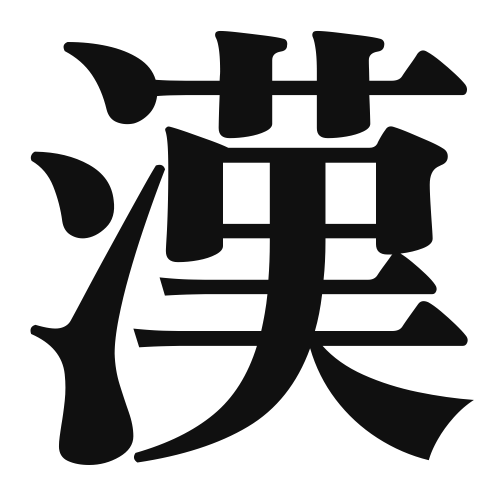1. Overview of Meaning
The kanji “漢” (kan) primarily refers to the Han dynasty of China, symbolizing Chinese culture and language. It is often associated with the concept of “Chinese” or “Han Chinese.” In a broader sense, it can also represent the idea of elegance and sophistication in writing and art.
2. Formation and Radicals
The kanji “漢” is a compound character, which means it is formed by combining different elements. It consists of the radical “氵” (water) on the left, which signifies a connection to rivers, and the character “漢” itself, which historically refers to the Han River. This character is classified as a 形声文字 (phono-semantic compound), where the left part indicates meaning and the right part indicates pronunciation.
3. Examples of Usage
Common words and phrases that include “漢” are:
- 漢字 (kanji) – Chinese characters used in Japanese writing.
- 漢文化 (kanbunka) – Chinese culture.
Example sentences in daily conversation:
- 「私は漢字を勉強しています。」(Watashi wa kanji o benkyou shiteimasu.) – “I am studying kanji.”
- 「漢文化に興味があります。」(Kanbunka ni kyomi ga arimasu.) – “I am interested in Chinese culture.”
4. Synonyms and Antonyms
Similar kanji with related meanings include:
- 中 (naka) – meaning “middle” or “center,” which can refer to the central aspect of Chinese culture.
- 唐 (tou) – referring to the Tang dynasty, another significant period in Chinese history, but with a different cultural context.
Antonyms include:
- 西 (nishi) – meaning “west,” which contrasts with the eastern cultural significance of “漢.”
5. Cultural and Historical Background
The kanji “漢” is deeply rooted in Japanese culture, reflecting the historical influence of China on Japan. It is often used in literature and art to evoke a sense of classical elegance. Additionally, there are proverbs and idiomatic expressions that incorporate “漢,” such as:
- 漢字は心の鏡 (Kanji wa kokoro no kagami) – “Kanji is a mirror of the heart,” emphasizing the depth of meaning in kanji characters.
This character serves as a bridge between Japanese and Chinese cultures, highlighting the shared history and linguistic ties.
